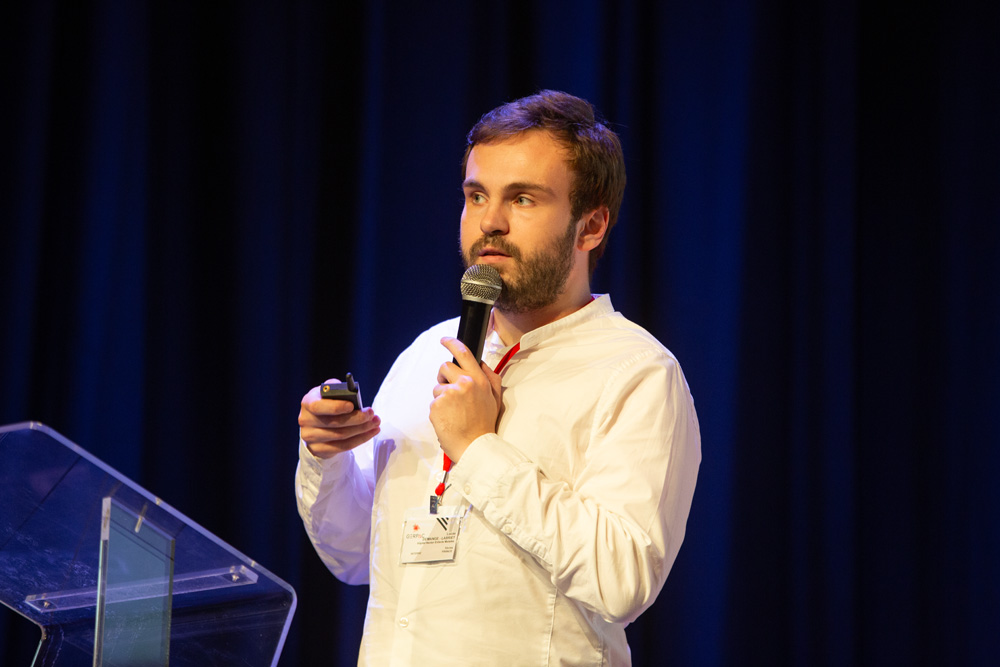How about 3D films? 3D printing development and characterization of an orodispersible hydrocortisone film formulation
2 October 2024
L. Demange - - Labriet, L. Denis, M. Annereau, C. Boisseillier, D. Kariyawasam, P. Marchadour, A-S. Fauqueur, A. Rieutord, C. Cotteret, S. Cisternino, A. Schweitzer-ChaputPharmacie à Usage Intérieur, APHP, Hôpital Necker Enfants Malades et Institut Gustave Roussy, Paris et Villejuif, France
Introduction
Congenital adrenal hyperplasia is a rare disease with an incidence of 50 patients per year in France, requiring lifelong supplementation with hydrocortisone (HCT). Acceptability is defined by the European Medicines Agency as the overall ability of the patient and caregiver to use a medicine. It is crucial for children, given the difficulty of swallowing dry forms and taste sensitivity. The orodispersible film (ODF) is a pharmaceutical form adapted to these characteristics: rapid disintegration in the patient’s mouth and easy administration by the caregiver.
Objective
The aim of this work was to develop a 3D printing method for HCT ODFs and to characterize them.
Materials and methods
HCT ODFs were printed from the formulation developed for manual deposition based on distilled water (Fresenius®), hydroxypropyl cellulose (Inresa®), glycerol (Cooper®), povidone K25 (Inresa®) and pharmaceutical-grade HCT hemisuccinate (Upjohn®). The M3DIMAKER™ 3D printer (FabRx Ltd) was used to develop the semi-solid extrusion printing method. Mechanical strength tests were carried out first: flexibility, tensile strength, dry appearance and de-conditioning. These were each scored arbitrarily out of 5 for a total of 15 points, the best score. Several characterization tests were then carried out to validate the formulation: uniformity of mass and thickness, disintegration time, residual water content.
Results
No modification of the formulation developed for manual deposition was necessary after adaptation of the printing parameters: extrusion speed, syringe pressure and shape adaptation. Three dimensions were selected: 18.4 x 9.2 x 0.4 mm (D1), 21.2 x 10.6 x 0.3 mm (D2) and 26 x 13 x 0.2 mm (D3). After mechanical strength tests, the D2 dimension obtained the best results (n = 5): 12.8 ± 0.4 versus 12.4 ± 0.9 for D1 and 7.6 ± 0.9 for D3. A D2 ODF has an average mass of 42.53 ± 1.38 mg for a thickness of 0.196 ± 0.009 mm (n = 20). Its disintegration time is better than D1 but longer than D3: 105 ± 15 s versus 130 ± 13 s and 95 ± 17 s (n = 3). The residual water content of D2 was 8.5 ± 0.7% (n = 10). Printed ODFs are uniform and the printing method is reproducible. The minimal 3D printing production time is 5 minutes for 40 D2 ODFs produced.
Discussion and conclusion
3D printing of drugs is an innovative, automated method for optimizing production. The D2 printing method produces ODFs that can be easily deposited and handled once dry, with an acceptable disintegration time. The development of 3D-printed ODFs offers a new galenic form for the therapeutic management of paediatric patients.
